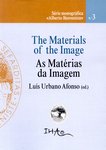Theory vs practice: synthesis of white lead following ancient recipes
 |
Paula M. Gonçalves, João Pires, Ana P. Carvalho, Maria Helena Mendonça, António João Cruz, "Theory vs practice: synthesis of white lead following ancient recipes", in Luís Urbano Afonso (ed.), The Materials of the Image. As Matérias da Imagem, Lisboa, Cátedra de Estudos Sefarditas «Alberto Benveniste» da Universidade de Lisboa, 2010, ISBN 978-989-8465-00-9, pp. 185-200 |
|
|
| Abstract | The synthesis of white lead pigment (usually described as basic lead carbonate, 2PbCO3·Pb(OH)2) following the recipes of ancient Portuguese painting treatises was studied, aiming to clarify the importance of some procedure details and the effect of the experimental parameters. Currently available lead plates and commercial vinegar were used. The recipe reported in Filipe Nunes’ treatise (1615), was the starting point of the study and the process was monitored by XRD. Selected samples were also characterized by SEM. The relative importance of temperature, CO2 atmosphere and H2O vapour was demonstrated. The pigments obtained presents basic lead carbonate phase but also a large content of other components. |
| Ver | |
| Academia | Researchgate | |
| Importar | RIS | Endnote |